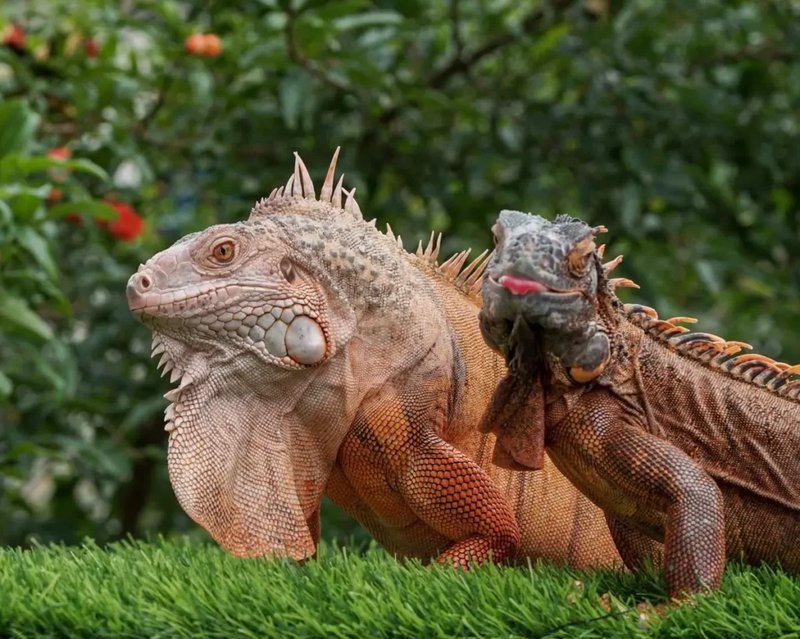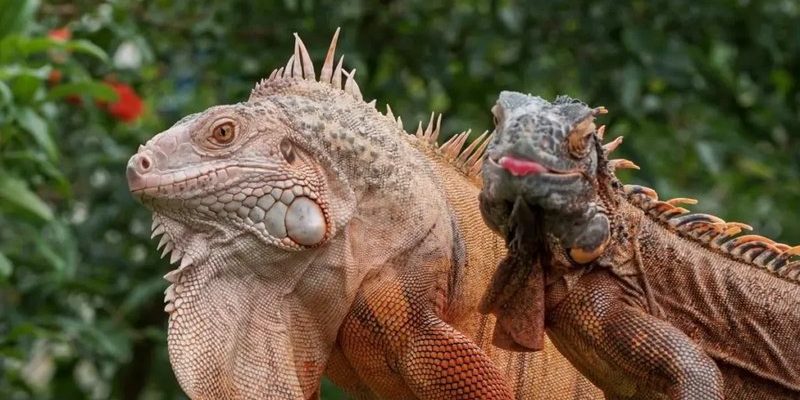
So, let’s dive into what makes these reptiles tick. We’ll explore their average lifespan, growth patterns, and factors that can impact their overall health and longevity. Whether you’re considering adopting one or you’re just curious, I promise you, there’s a lot to discover about your scaly friends.
Understanding Lifespan: How Long Do Red Iguanas Live?
When it comes to the lifespan of a red iguana, you can generally expect them to live between 15 to 20 years. That’s quite a commitment! It’s kind of like adopting a small dog, but with a bit more scale and a lot less barking.
The age factor can vary based on a few essential elements, including care, diet, and environmental conditions. If you’re thinking, “What’s the secret sauce to longevity?” Well, a balanced diet full of fresh vegetables, leafy greens, and appropriate supplements plays a huge role. Just like us, a healthy diet can lead to a longer life.
Another factor is the overall habitat. A secure and stress-free environment contributes immensely to their well-being. If you’re giving your iguana a cozy space with the right temperature, humidity, and UV light, you’re setting them up for a happy, healthy life.
Growth Expectations: How Big Do Red Iguanas Get?
Red iguanas are not just pretty faces; they grow to be quite substantial. Typically, they can reach lengths of 4 to 6 feet, depending on various factors. This growth isn’t just about length; it also includes body mass, which means you need to provide enough space for them to thrive.
During the first couple of years, they experience some of the most rapid growth. Imagine a teenager going through a growth spurt—your iguana will likely gain a significant amount of weight and length during this stage. You might be thinking, “How fast will they grow?” Well, in their first year alone, they can grow about 1 foot in length!
It’s important to provide proper care during this phase, as inadequate nutrition can stunt their growth. Offering a variety of foods can enrich their diet and help them achieve their full potential size.
Factors That Affect Lifespan and Growth
You might be wondering what really affects how long your red iguana lives and how quickly they grow. Several key factors play into this:
- Diet: A well-balanced diet rich in proper nutrients can boost their health and growth. Leafy greens, fruits, and vegetables are vital.
- Habitat: A spacious and well-maintained terrarium mimics their natural environment. Make sure you provide UV light and proper temperatures.
- Health Care: Regular vet visits can catch potential health issues before they become serious.
- Stress Levels: A calm and secure environment minimizes stress, which can drastically affect their growth and lifespan.
These factors work hand in hand to create a healthy, thriving iguana. Honestly, even small changes in their daily routine can lead to significant impacts over time.
Signs of a Healthy Red Iguana
As you take care of your red iguana, you’ll want to watch for signs of good health. Understanding these indicators can help you gauge whether your iguana is thriving:
- Bright Eyes: Clear, vibrant eyes indicate they’re feeling good.
- Active Behavior: If they’re moving around and exploring, it’s a good sign they’re comfortable.
- Healthy Shedding: Regular shedding is normal. If it’s happening evenly, it’s a positive sign.
- Good Appetite: If your iguana eagerly eats its food, that usually means they’re healthy.
If you notice any changes (like lethargy or a loss of appetite), it might be time to visit the vet. Remember, it’s always better to err on the side of caution.
Creating the Perfect Habitat
To support the health and growth of your red iguana, setting up a suitable habitat is crucial. Think of it as creating a mini paradise for your scaly friend. Here’s what you need to consider:
1. Size of the Enclosure: A young iguana can start in a smaller terrarium, but you’ll eventually need an enclosure of at least 6 feet long for an adult.
2. Temperature and Lighting: Iguanas need a basking area that reaches about 95°F and a cooler area around 75°F. Also, make sure to provide UVB lighting to help them synthesize vitamin D3.
3. Humidity Levels: Red iguanas thrive in humidity levels around 70% to 80%. Mist the enclosure regularly to maintain these levels.
4. Hiding Spots: Use branches, foliage, and caves to create a natural environment. This gives them space to hide and feel secure.
By setting up a cozy and secure habitat, you’re already giving your iguana a great start to a long, healthy life.
In the world of exotic pets, red iguanas stand out with their vibrant colors and impressive growth potential. With an average lifespan of 15 to 20 years, these reptiles can be long-term companions if given the right care. By focusing on a nutrient-rich diet, creating a comfortable habitat, and providing regular health check-ups, you enhance their chances of living a full life.
Remember, each iguana is unique; their personalities and growth patterns can vary. But with love, patience, and understanding, you can enjoy a rewarding relationship with your red iguana, watching it grow and thrive for years to come. So, settle in, enjoy the ride, and embrace the adventure of iguana ownership!

